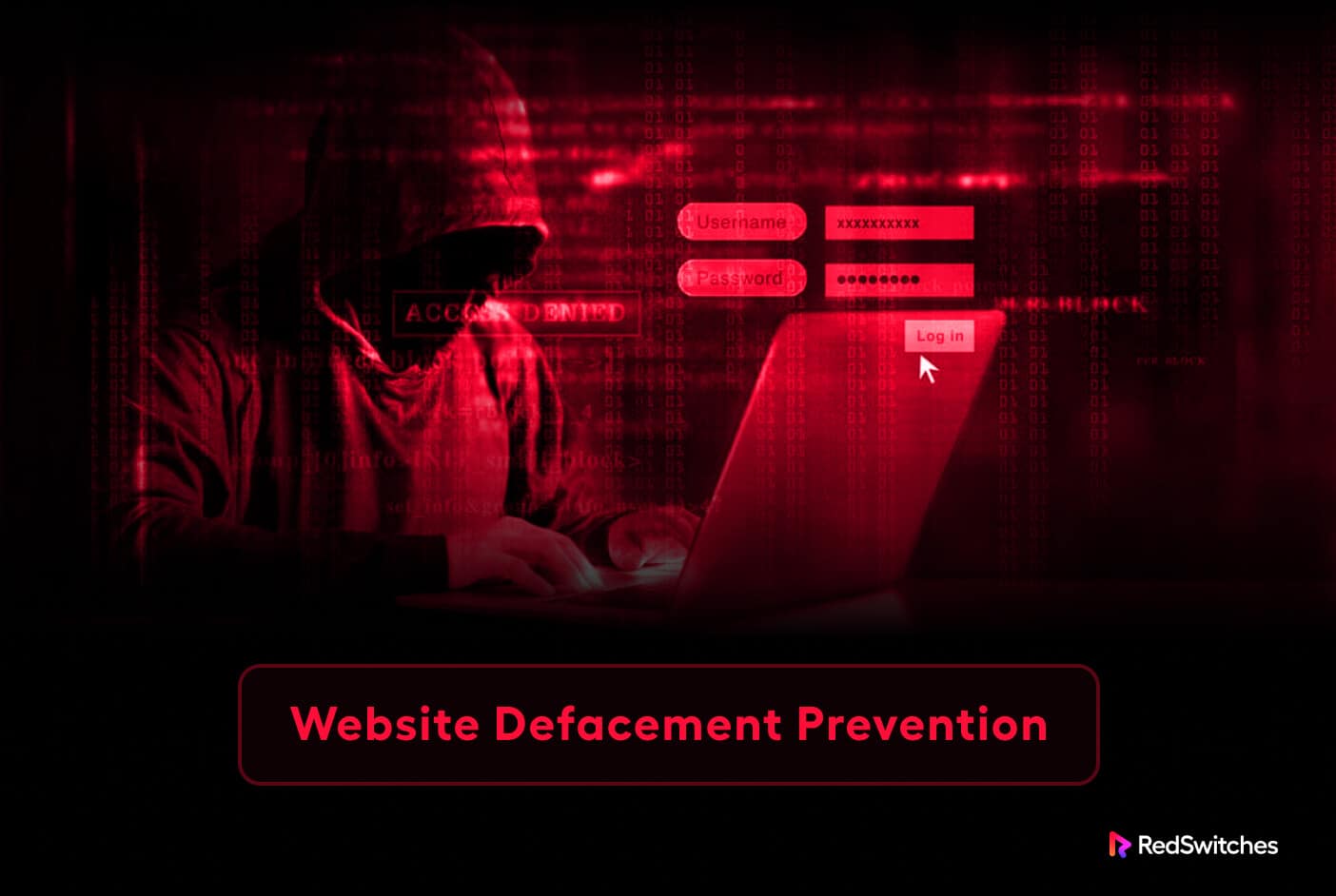As a website grows, it starts attracting the attention of criminals who use a range of attacks to crack the security and gain access to the information saved on the server.
When this happens, the most common security incident is a data breach where user information is compromised.
However, hackers often replace the original content of the website’s homepages (and inner pages) with a political or obscene statement. Other times, the hackers leave a message claiming responsibility for the incident.
This is how a typical website defacement incident plays out.
Hackers either delete or encrypt the original content, so restoring activities requires additional steps.
This article will discuss web defacement, the techniques hackers use for these attacks, and how you can prevent these attacks from affecting your business processes.
Table Of Contents
- What is Website Defacement?
- Motives Behind Website Defacement
- Techniques Used in Website Defacement
- Impact and Risks of Website Defacement
- How To Prevent Website Defacement Attacks?
- Conclusion
- FAQs
What is Website Defacement?
A website defacement attack is a breach in website defenses that results in hackers replacing its content with their messaging.
The messages may contain political or religious statements, vulgar language, or otherwise offensive material that would embarrass website owners and the audience.
Defacers who want public attention typically leave behind signs such as their website and contact information that can be used to identify them.
Despite no data theft, website defacement represents a significant security breach and harms a business’s reputation.
Motives Behind Website Defacement
Now that you know the basics of website defacement, let’s discuss the motives behind a website defacement attack.
Focus and Awareness
Defacers can use a specific subset of website defacement techniques to increase their visibility and attract attention to their cause. The objective is to spread awareness, leave a digital “signature,” or deliver a message to a large audience in the shortest time possible.
Political Messaging
The most well-known website defacement attacks are demonstrations against specific political ideologies or regimes.
Hackers target websites operated by governmental bodies, political parties, or other groups and post messages that support or detract from the official position. For specific hacker organizations, website defacement can express online activism or protest.
Revenge
Attacks on websites that deface pages can occasionally result from personal animosities or a desire for vengeance. In these cases, the attacks are carried out by website administrators who think the website owners have wronged them. Defacing websites attempt to make the owners look bad, impair business operations, or harm their reputation.
Proof-of-Concept Attacks
Hackers occasionally desire attention from the hacking community or a chance to demonstrate their skills. Successful attacks are a great way of gaining notoriety and developing a reputation as elite hackers in the community.
Highlighting Vulnerability in Website Security
Some hackers may deface a website to draw attention to or disclose specific website security flaws. Defacing a website might draw attention to particular exploitation gaps or weak points in website security.
Techniques Used in Website Defacement
The first step in dealing with website defacement incidents is understanding how these attacks happen. Let’s discuss some techniques hackers deploy during these attacks.
RFI( Remote File Inclusion)
RFI is a security vulnerability that hackers use to insert remote malicious files into a web application. This vulnerability is a popular way of running malicious code on a server to deface a website or steal confidential data.
SQL Injection Attacks
SQL injection involves inserting malicious SQL queries into a web application’s input fields. The attacker can manipulate the database, retrieve sensitive information, modify data, or deface the website if the website doesn’t adequately check or sanitize user inputs.
Cross-Site Scripting (XSS) Attacks
An attacker can insert harmful scripts into web pages accessible to visitors. XSS attacks often tamper with the website content, steal session cookies, or send users to malicious websites.
Brute Force Attacks
Attackers may employ automated scripts to try thousands of credential combinations to guess access credentials.
Exploiting Vulnerable Plugins or Software
Attackers may use well-known security flaws in server software, website plugins, or themes to get unauthorized access and deface the website.
Impact and Risks of Website Defacement
The first and the most damaging impact of defacement is the loss of credibility for the business. We’ll now discuss this issue in more detail.
Loss of Trust
The most severe and immediate effect of website defacement is damaging the affected entity’s reputation. A vandalized website gives a bad impression of the business to partners, clients, consumers, and the general public.
Visitors to the website start believing that the business is unreliable, insecure, or unable to protect its digital assets.
Long-term effects may result from the loss of confidence caused by website defacement. Customers may hesitate to carry out financial transactions on the compromised website. This eventually results in a drop in web traffic and loss of sales.
Existing clients may stop trusting the business’s ability to safeguard their private information, which could result in client turnover and harm client loyalty.
Legal Concerns
Defacing a website can result in several legal and regulatory difficulties for the affected businesses. Unauthorized website access and destruction of website content often violate data protection and intellectual property laws.
How To Prevent Website Defacement Attacks?
After learning the impact and risks of a defacement attack, let’s discuss how to prevent these attacks from disrupting your business operations.
Be Cautious When Uploading Files to Your Website
Allowing users to upload files is a surefire recipe for disaster. Hackers can exploit this opportunity to execute code and replace existing content on the website.
To prevent this from becoming a possible entry point for hackers, follow these guidelines:
- Modify the uploaded files’ permissions to prevent the server from attempting to execute them.
- Don’t save files in the root directory to prevent the hacker from accessing them.
- Limit the types and sizes of uploaded files.
- A virus check should be performed on each file.
Control User Access
Employ the principle of the Least Privilege to restrict access to critical website areas.
Additionally, make sure employees leaving the organization should not have access to their accounts after their exit.
Strong login credentials are harder to ensure more users can access the website. Another error with cloud security is poor access management.
Conclusion
Businesses and organizations should consider website defacement as a serious threat that underscores the significance of effective cybersecurity measures. These attackers use sophisticated tactics to exploit website security weaknesses to deface website content.
Proactive prevention is essential to protect against these types of attacks. Implementing robust security measures, regularly checking vulnerabilities, and updating software to strengthen website defenses is crucial.
Working with a trustworthy hosting company like RedSwitches is quite essential for increasing website security. We assist organizations in staying one step ahead of potential dangers by providing a secure hosting infrastructure, DDoS protection, and firewalls.
FAQs
1) Why do hackers alter websites?
Websites are attacked for a variety of reasons. Some use it to make a statement or further a certain ideology for political or personal reasons. While some may deface websites as a kind of cyberwarfare or to highlight the weaknesses of the website, others may do so to gain notoriety among hacking communities.
2) Can hosting companies for websites aid in preventing defacement?
Reliable web hosting companies like RedSwitches can indeed be extremely helpful in preventing website defacement. They frequently provide security tools like DDoS defense, intrusion detection, and real-time monitoring to find and neutralize possible threats.



